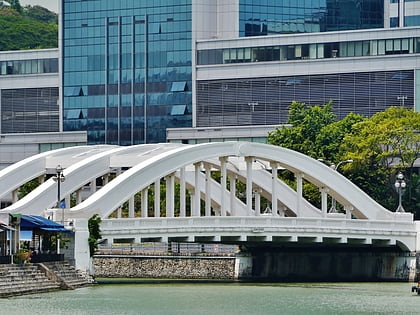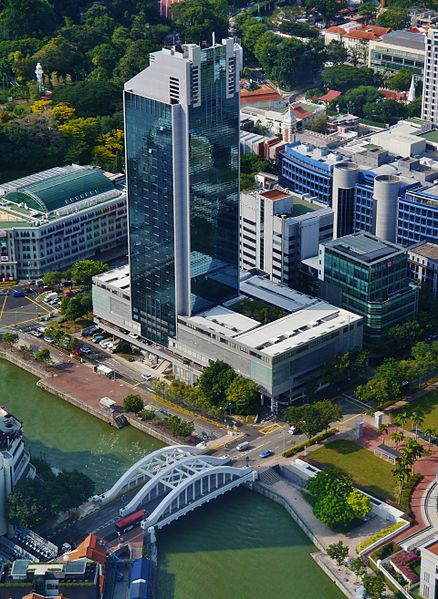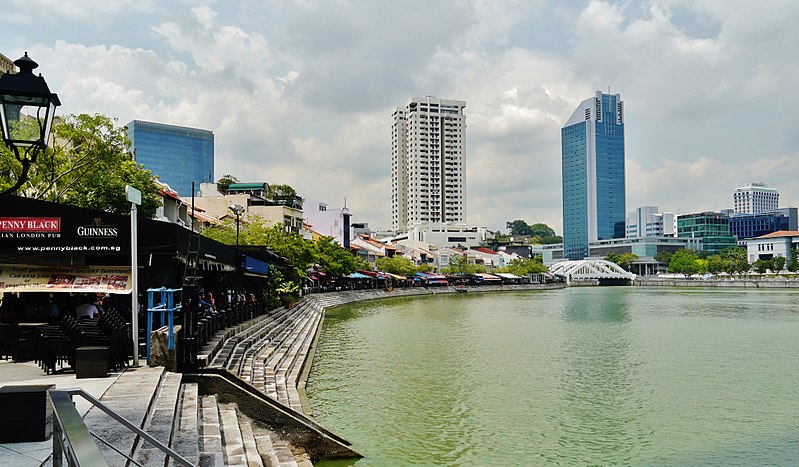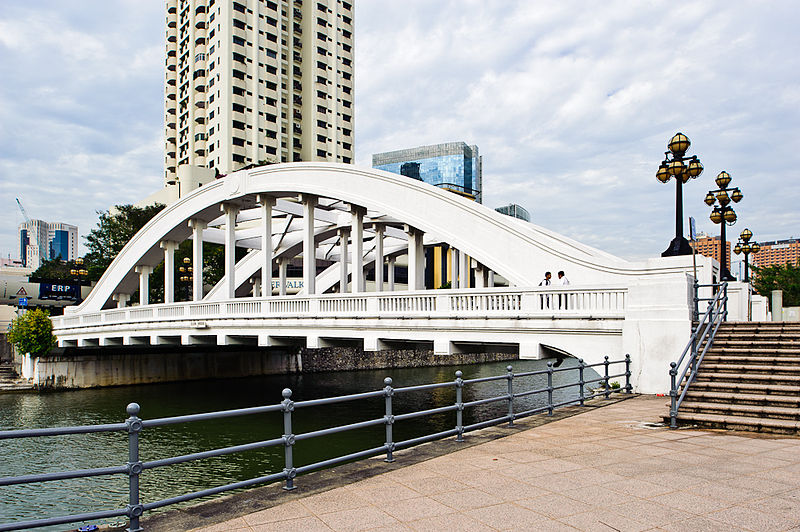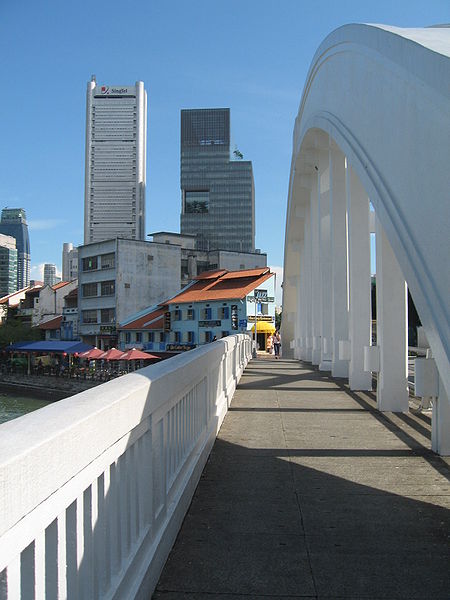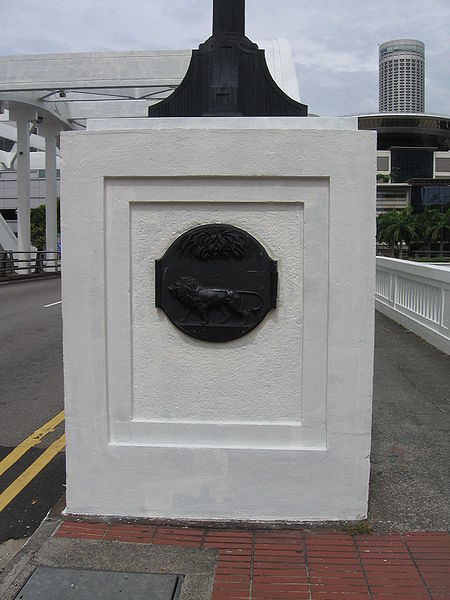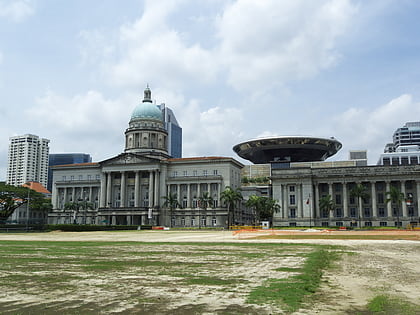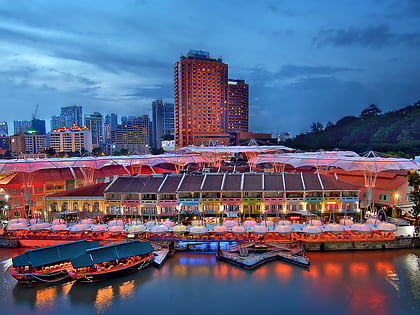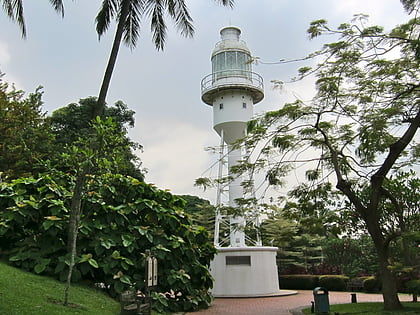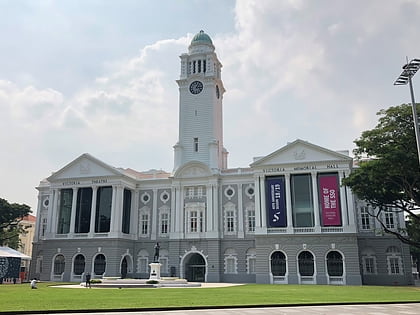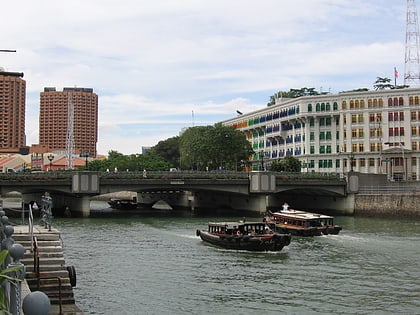Elgin Bridge
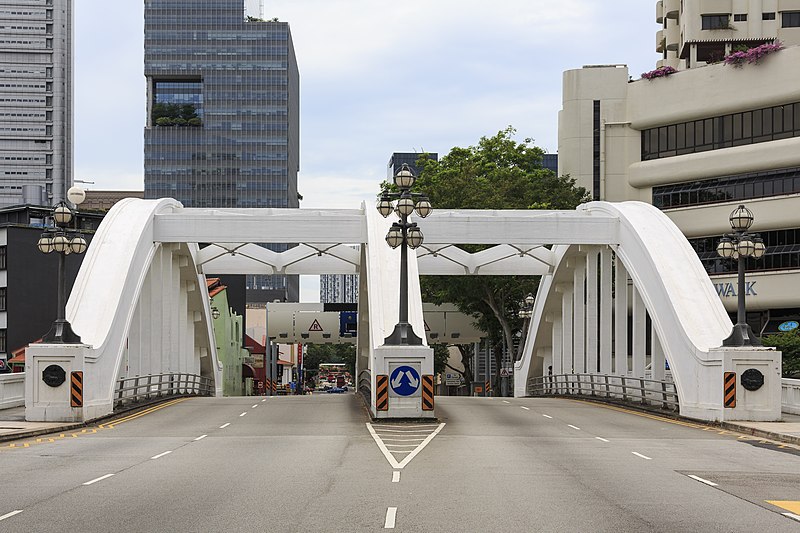
Facts and practical information
Elgin Bridge, a historic and functional landmark, serves as a vital connection across the Singapore River in the heart of the city-state's Central Area. Named after Lord Elgin, the British Governor-General of India, the bridge marks the boundary between the Downtown Core and the River Valley planning areas.
This elegant bridge, originally a simple footbridge erected in 1819, has undergone several transformations to accommodate the city's growth. The current structure, opened in 1929, is the third incarnation, designed to facilitate vehicular traffic while preserving its aesthetic appeal.
As the first bridge to span the Singapore River, Elgin Bridge holds a special place in the nation's urban history. It stands as a reminder of Singapore's colonial past and its journey towards modernization. The bridge's strategic location has made it a focal point for both commerce and culture, linking the commercial district with the historic areas of Chinatown and Little India.
Elgin Bridge is not just a functional piece of infrastructure; it is also a picturesque spot for tourists and locals alike. The bridge offers a panoramic view of the river and the city's skyline, making it a popular location for photography. Its ornate lampposts and the emblem of the Singapore Municipal Commission embellish the bridge, enhancing its historical charm.
Elgin BridgeCentral
Elgin Bridge – popular in the area (distance from the attraction)
Nearby attractions include: National Gallery Singapore, Cavenagh Bridge, Clarke Quay, Asian Civilisations Museum.
